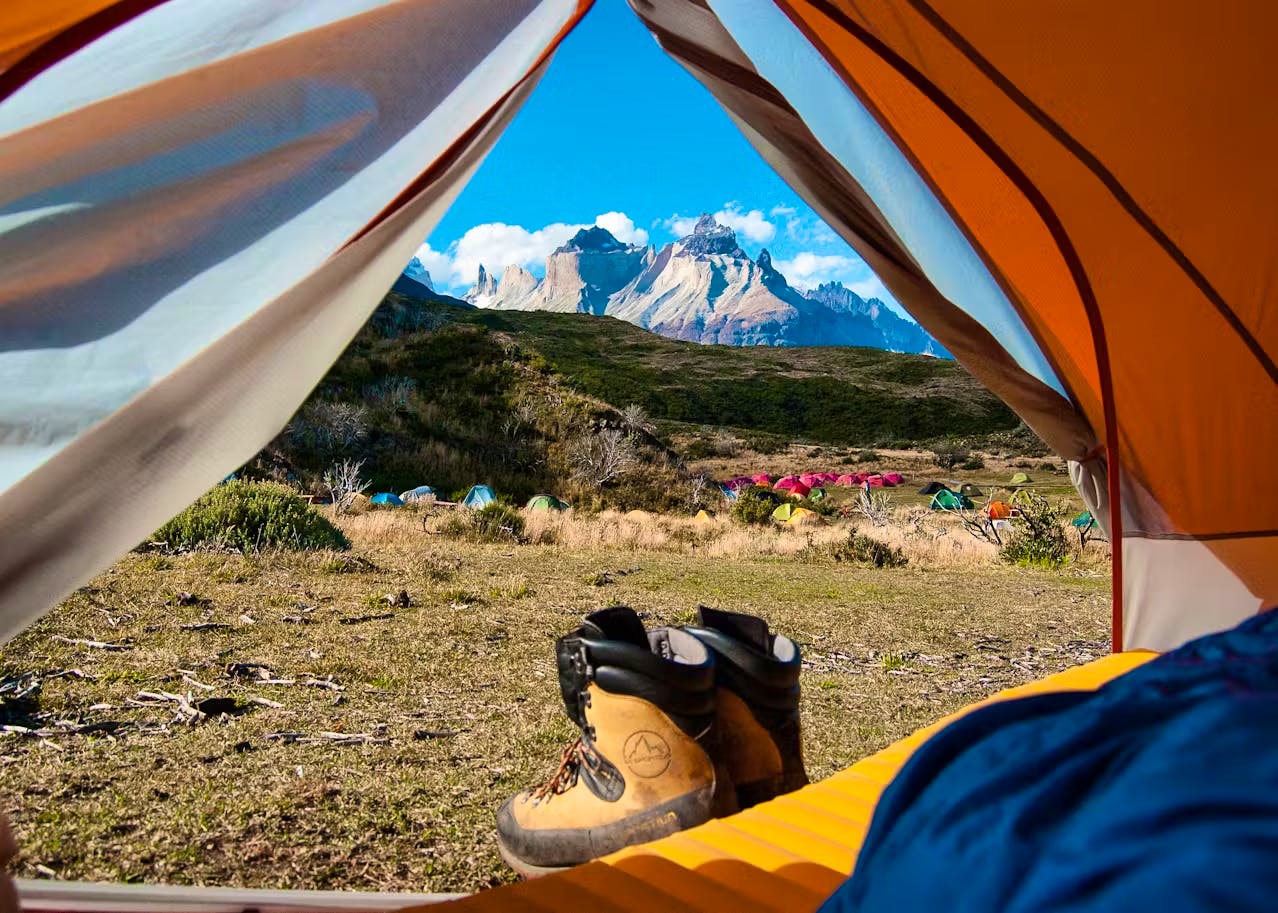Hiking In Patagonia? Here's Your Essential W Trek Packing List

1. A Good Backpack
Capacity: A 50-60 litre backpack is ideal for carrying all necessary gear without being overly cumbersome.
Comfort and support: Look for a backpack with an ergonomic design that includes padded straps, a supportive waist belt, and a ventilated back panel to ensure comfort during long hikes.
Durability and access: Ensure the backpack has multiple compartments for easy access and a rain cover for weather protection

2. Clothing and Shoes
a) Base and Inner Layers
A few pairs of underwear, swimwear (for exploring lakes, pools, and rivers), a fast-drying microfiber towel and handkerchiefs.
A couple of short and long-sleeve shirts
A long-sleeved shirt or tank. A running shirt works well to keep you protected from the sun.
Pack a fleece or wool mid-layer for insulation during cooler conditions

b) Outer Layers
A high-quality waterproof and breathable shell jacket and trousers are essential to protect against rain and wind.
Waterproof gloves.
Rain jacket and trousers - these are godsends, especially if it rains during your hike.
A neck gaiter for protection in windy conditions.
A headband or warm hat.
c) Footwear
Hiking Boots: Waterproof boots with sturdy soles and good ankle support are crucial. Break them in well before the hike to avoid blisters.
Good hiking socks: Bring multiple pairs of moisture-wicking socks and consider sock liners for extra comfort.


3. Hiking Gear
For navigation: A reliable GPS device, a physical map of the area (you can get one at the entrance!), and a compass are indispensable for navigation through the park.
Large water bottle: Pack a durable water bottle and a portable water filter to access clean water from streams.
Trekking poles: Some areas are particularly steep, and the terrain can get muddy, slippery, or rocky. Hiking poles will help you keep steady on such terrain and will be super helpful if you have knee issues. Choose a brand that offers anti-slip handles, anti-shock mechanisms, and a rubber tip.
4. Personal Items
Sun protection: UV-blocking sunglasses, a sun hat, and sunscreen are necessary under the often harsh Patagonian sun.
First aid kit: Include bandages, antiseptic, blister treatments, and any personal medications.
Hygiene supplies: Carry biodegradable soap, toothbrush, toothpaste, and hand sanitizer. You can also bring optional items like baby wipes, face wipes, lip balm, deodorant, and bug repellent.

5. Essential Documents
Passport and copies. You'll also need a driver's license to rent a car, plus identification documents for minors.
Travel insurance policy copies.
Visa (depending on your country of origin). Generally, citizens of the European Union, the UK, the United States, and Canada do not require one.
Spanish Phrasebook can be useful when learning a phrase or two!
Cash tips for guides. Often, tourist areas will accept US dollars but having some local Chilean Pesos is wise.
A debit or credit card for shopping and other applicable fees.
6. Miscellaneous
Technology: A solar charger and spare batteries for electronic devices.Some devices you can carry include your smartphone, camera, and earplugs or headphones
Waterproof pouches or bags: These will keep your devices and documents like passports and permits dry and safe.
Entertainment: Lightweight items like a book, cards, or a travel journal to enhance your downtime.

If You're Trekking Completely Self-Sufficiently...
Book a guided trip where local guides handle most logistics, including meals and stays
Book a 'self-guided' trip package, that provides accommodation, sleeping items and most food along the way.
Go on a completely self-sufficient trek. With this option, you want to sure you know the terrain well - including the weather and any surprises! And you will need to bring camping gear and food for the whole trek.
Tent and sleep system: A lightweight tent, a sleeping bag rated for the local temperature, and an insulated sleeping pad will ensure a good night's sleep.
Cooking equipment: A compact stove, fuel, a lightweight pot, and a reusable utensil set are necessary for preparing meals.
Lightweight meals and snacks

Ready for the W Trek?
W Trek Blog Posts on Skyhook
O trek vs. W trek
Find your next adventure
Why Skyhook?
Join over 27,000 Skyhook adventurers who've used our platform to book directly with our vetted local guides, at local prices (we never markup).
Expert Local Guides
Experienced local guides, handpicked by us.
Best Prices
Never pay a markup on the local guide's price.
Exclusive Club
Earn loyalty rewards every time you travel.
Great Social Vibes
Small group tours provide a richer experience.
Stellar Feedback
Over 3,000 reviews, average of 4.9/5 stars.












